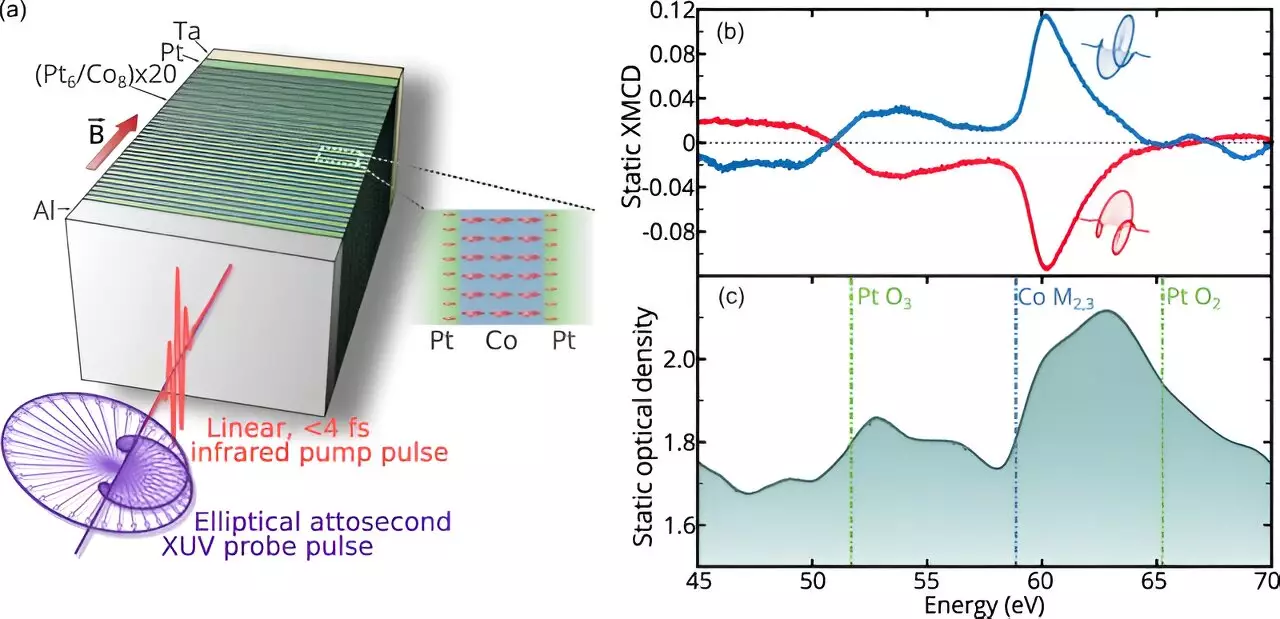Recently, a groundbreaking study led by an international team of physicists sheds light on the direct generation of spin currents using ultrashort laser pulses. Published in the esteemed journal Physical Review Letters, this research could significantly impact the development of next-generation electronic devices. Spin currents, characterized by the alignment of electron spins, present a compelling avenue for enhancing device speed and energy efficiency. In an era focused on sustainable technology, the implications of integrated spintronic solutions that utilize these currents are nothing short of revolutionary.
Historically, efforts to harness spin currents primarily relied on indirect methods, where lasers would generate electron spins with mixed orientations. This indirect generation required complex filtering processes to isolate the aligned spins necessary for functional applications. However, this approach often led to inefficiencies that hampered overall performance. Existing technologies struggled to produce usable spin currents, sustaining a cycle of research that aimed to conquer these challenges without significant breakthroughs.
The recent study marks a significant departure from previous endeavors by introducing a novel methodology that generates spin currents directly and efficiently. Researchers constructed a target block composed of 20 nanometer-thick alternating layers of platinum and cobalt, showcasing an innovative approach to material design. This aspect alone reflects the meticulousness of the study—layering materials at the nanoscale allows for enhanced control over electronic properties.
The experimental setup involved directing a strong magnetic field perpendicularly to the layers within the block, which aligned the electron spins in both materials. This alignment set the stage for the subsequent application of ultrashort laser pulses. The team employed a linearly polarized laser followed by a circularly polarized probe laser, a strategic move designed to shift electron spins rapidly—a process achieved in merely femtoseconds, a timeframe that supersedes previous methodologies.
The outcomes from this innovative experiment were striking. The application of the lasers induced a sudden alteration in magnetic ordering across the layered materials, leading to changes in the overall magnetism. Such rapid transformations signify the potential for manipulation of spin states with unprecedented speed and precision.
The researchers additionally conducted theoretical calculations to validate their empirical data, confirming that the experimental results aligned with expected electron interactions. This convergence of theory and experiment fortifies the study’s findings, laying an essential foundation for future investigations into spintronic applications—such as high-speed data storage and processing devices that consume significantly less energy.
As quantum technologies continue to evolve, the ability to generate spin currents directly through laser pulses opens a diverse landscape of possibilities for the future of electronics. From industry applications to everyday devices, the implications of this research extend well beyond theoretical interest. The path toward effective spin-based technologies appears clearer today, heralding a new addition to the toolkit of physicists and engineers aiming to create faster, more energy-efficient devices for a sustainable future. The study not only challenges previous methodologies but also paves the way for innovative solutions that could reshape the technological landscape.


Leave a Reply